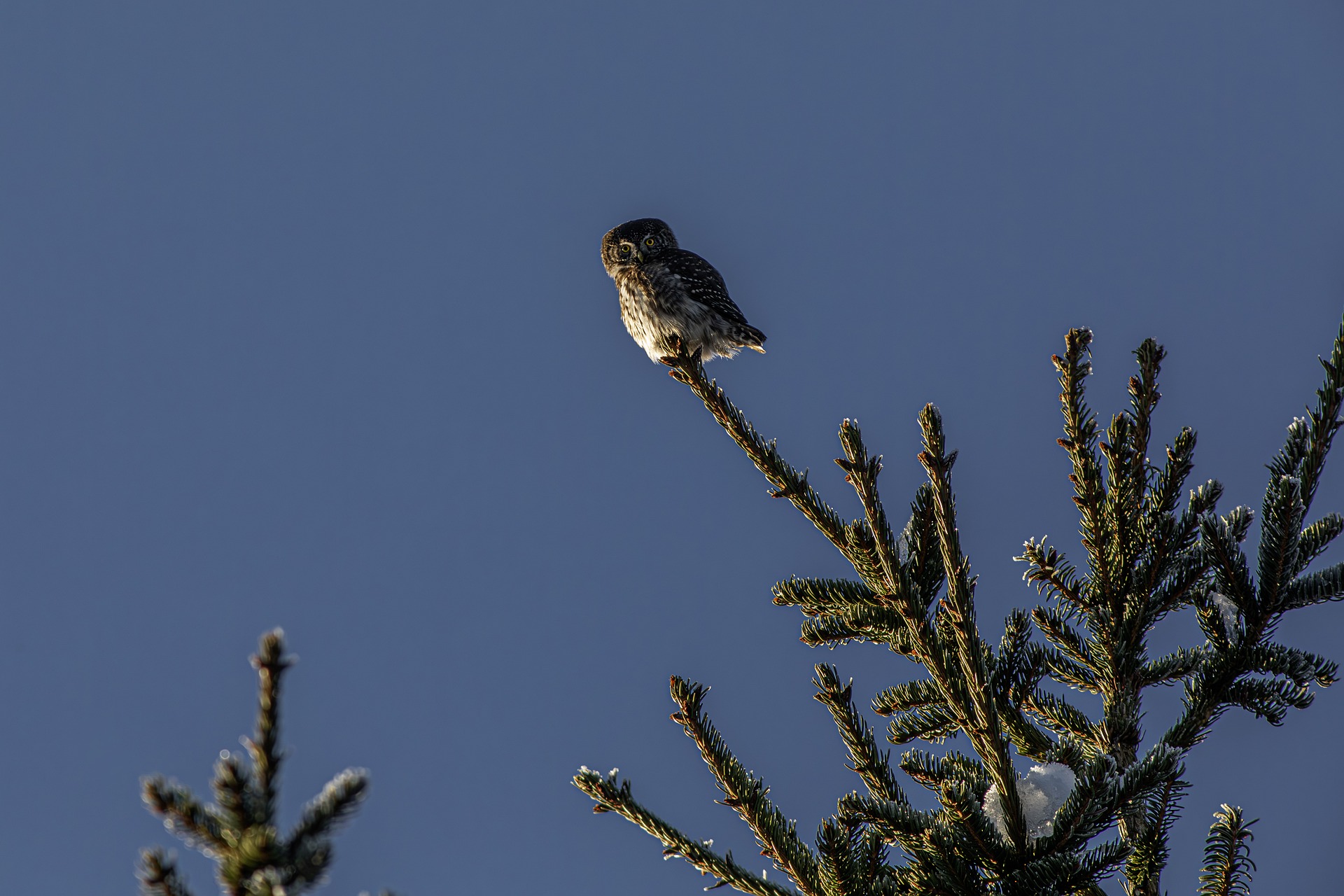The Eurasian Pygmy Owl (Glaucidium passerinum) is a small owl species found across Europe and parts of Asia. Here’s some information about the Eurasian Pygmy Owl:
- Size and Appearance: The Eurasian Pygmy Owl is indeed tiny, measuring around 15 to 19 centimeters (6 to 7.5 inches) in length and weighing about 60 to 90 grams (2.1 to 3.2 ounces). It has a rounded head with prominent yellow eyes and lacks the ear tufts that are characteristic of some other owl species. Its plumage varies but often includes shades of brown, grey, and white, providing excellent camouflage against tree bark.
- Habitat: Eurasian Pygmy Owls inhabit a variety of forested habitats, including coniferous, deciduous, and mixed forests, as well as woodland edges and scrublands. They are often associated with areas of dense vegetation, where they can find suitable roosting and nesting sites, as well as abundant prey.
- Range: The Eurasian Pygmy Owl has a wide distribution, ranging from northern and central Europe through parts of Asia, including Siberia, Mongolia, and northern China. Within its range, it may occupy different habitats depending on local conditions and seasonal variations.
- Behavior: Despite its small size, the Eurasian Pygmy Owl is an adept hunter, preying primarily on small mammals such as voles, mice, and shrews, as well as birds, insects, and other small vertebrates. It hunts primarily during the day, using its sharp vision and acute hearing to locate prey from perches in trees or while on the wing.
- Breeding: Breeding season for the Eurasian Pygmy Owl typically occurs in the spring, with pairs forming monogamous bonds and defending territories. They nest in tree cavities, abandoned woodpecker holes, or old nests of other birds, lining the nest with soft materials such as feathers and moss. The female lays a clutch of eggs, which she incubates while the male brings food to her. Both parents participate in feeding and caring for the young.
- Conservation: While the Eurasian Pygmy Owl is not considered globally threatened, it may face localized threats from habitat loss and fragmentation, as well as persecution from humans. Conservation efforts focus on habitat preservation and management, as well as raising awareness about the importance of these small owls in maintaining balanced ecosystems.
Overall, the Eurasian Pygmy Owl is a charismatic and fascinating owl species, admired for its small size, cryptic plumage, and impressive hunting abilities.
Visited 3 times, 3 visit(s) today
Views: 16
Subscribe to the newsletter:
